Nexagent, an enigmatic company?
March 2007
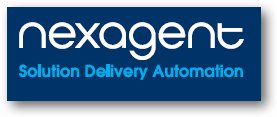 In a recent post,
MPLS and the limitations of the Internet, I wrote about the
challenge of expecting predictable performance for real-time services such as client / server applications, Voice over IP (VoIP) or video services over the public Internet.
In a recent post,
MPLS and the limitations of the Internet, I wrote about the
challenge of expecting predictable performance for real-time services such as client / server applications, Voice over IP (VoIP) or video services over the public Internet.
I also wrote about the challenges of obtaining predictable performance for these same applications on a Wide area Network (WAN) using IP-VPNs when the WAN straddles multiple carriers - as they most always do. This is brought about about by the fact that the majority of carriers to not currently inter-connect their MPLS networks to enable seamless end-to-end multi-carrier Class-of-Service based performance.

As mentioned in the above post, there are several companies that focus on providing this capability through a mixture of technologies, monitoring and a willingness to act as a prime contractor if they are a service provider. However today, the majority of carriers are only able to provide Service Level Agreements (SLAs) for IP traffic and customer sites that are on their own network. This forces enterprises of all sizes to either manage their own multi-carrier WANs or outsource the task to a carrier or systems integrator that is willing to offer a single umbrella SLA and back this off with separate SLAs to each component provider carrier.
Operational Support Software (OSS) Vendors challenges
An Operations Support System is the software that handles workflows, management, inventory details, capacity planning and repair functions for service providers. Typically, an OSS uses an underlying Network Management System to actually communicate with network devices. There are literally hundreds of OSS vendors providing software to carriers today, but it is interesting to note that the vast majority of these only provide software to help carriers manage their network inside the cloud i.e. to help them manage their own network. In practice, each carrier uses a mixture of bought in and 3rd party OSS to manage their network so each carrier has, in effect, a proprietary network and service management regime that makes it virtually impossible to inter-connect their own IP data services with those of other carriers.
As you would expect in the carrier world, there a number of industry standard organisations that are working on this issue but this is such a major challenge I would doubt that OSS environments could be standardised sufficiently to enable simple inter-connect of IP OSSs anywhere in the near future - if ever. Some of these bodies are:
-
The IETF, who work at the network level such as MPLS, IP-VPNs etc;
-
The Telecom Management Forum, who have been working in the OSS space for many years;
-
The MPLS Frame Relay Forum who "focus on advancing the deployment of multi-vendor, multi-service packet-based networks, associated applications, and interworking solutions"
-
And one of the newest, IPSphere whose mission "is to deliver an enhanced commercial framework - or business layer - for IP services that preserves the fundamental ubiquity of the Internet�s technical framework and is also capable of supporting a full range of business relationships so that participants have true flexibility in how they add value to upstream service outcomes."
-
The IT Information Library which is a "framework of best practice approaches intended to facilitate the delivery of high quality information technology (IT) services. ITIL outlines an extensive set of management procedures that are intended to support businesses in achieving both quality and value, in a financial sense, in IT operations. These procedures are supplier independent and have been developed to provide guidance across the breadth of IT infrastructure, development, and operations."
As can be imagined, working in this challenging inter- carrier, service or OSS space provides both a major opportunity and a major challenge. One company that has chosen to do just this is Nexagent.
In my travels, I often get asked "what is it that Nexagent actually does?" so I would like to have a go at answering this question after setting the scene in a previous post - MPLS and the limitations of the Internet .
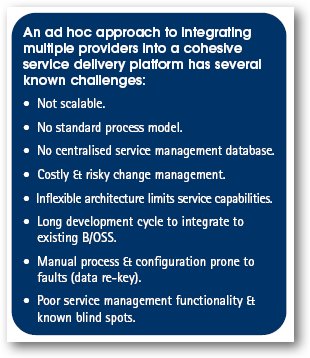
The traditional way of delivering WAN-based enterprise services or solutions based on managing multiple service providers (carriers) has a considerable number of challenges associated with it. This could be a company WAN formed by integrating IP-VPNs or simple E1 / T1 TDM bandwidth services bought in from multiple service providers around the world.
The most common approach is a proprietary solution, which is usually of an ad hoc nature built up piecemeal over a number of years from earlier company acquisitions. The strategic idea would have been to integrate and harmonise these disparate networks but there was usually never enough money to start, let alone complete, the project.
Many of these challenges can be seen listed in the panel on the right taken from Nexagent's brochure. Anyone that has been involved in managing an enterprise's Information and Communications Technology (ICT) infrastructure will be very well aware of these issues!
Overview of Nexagent's software
Deploying an end to end service or application running on a WAN, or solution as it is often termed, requires a combination of:
-
workflow management: A workflow describes the order of a set of tasks performed by various individuals or systems to complete a given procedure within an organization., and
-
supply chain management: A supply chain represents the flow of materials, information, and finances as they move in a process - or workflow - from one organisation or activity to the next.
In the situation where every carrier or service provider has adopted entirely different OSS combinations, workflow practices and supply chain processes, it is no wonder that every multi-carrier WAN represents a complex, proprietary and bespoke solution!
Nexagent has developed a unique abstraction or Meta Layer technology and methodology that manages and monitors the performance of an end-to-end WAN IP-VPN service or solution without the need for a carrier to swap-out their existing OSS infrastructure. Nexagent's system runs in parallel with, and integrates with, multiple carriers' existing OSS infrastructure and enables a prime-contractor to manage multi-carrier solutions in a coherent rather than an ad hoc manner.
Let's go through what Nexagent offers following a standard process flow for deploying multi-supplier services or solutions using Nexagent's adopted ICT Infrastructure Management (ICTIM) model.
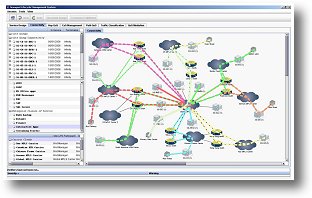 Service or solution modelling:
In the ICTIM reference model, this is the Design stage. The is a crucial step and is
focused on capturing all the enterprise service requirements and design as early as possible in the
process as possible and maintaining that knowledge for the complete service lifecycle. Nexagent has developed a
CAD-like modelling capability with front-end capture based on a simple-to-use Excel
spreadsheet as every carrier uses a different method of capturing their WAN designs. The model is created up front and acts as a reference benchmark if the design is changed at any future
time. The tool provides price query capabilities for use with bought-in carrier services together with automated design rule verification.
Service or solution modelling:
In the ICTIM reference model, this is the Design stage. The is a crucial step and is
focused on capturing all the enterprise service requirements and design as early as possible in the
process as possible and maintaining that knowledge for the complete service lifecycle. Nexagent has developed a
CAD-like modelling capability with front-end capture based on a simple-to-use Excel
spreadsheet as every carrier uses a different method of capturing their WAN designs. The model is created up front and acts as a reference benchmark if the design is changed at any future
time. The tool provides price query capabilities for use with bought-in carrier services together with automated design rule verification.
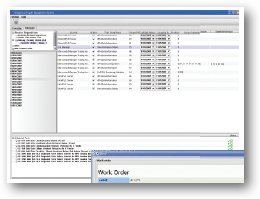
Implementation engine: In the ICTIM reference model, this is the Deploy stage. The software automatically populates the design created at the design stage with the required service provider interconnect configurations, generates service work orders for each service provider involved with the design and provisions the network interconnect to create a physical working network. The software is based on a unified information flow to network service providers. Importantly, it schedules the individual components of the end-to-end solution to meet the enterprise roll-out and change management needs.
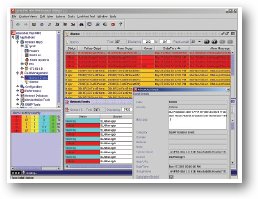 Experience
manager: In the ICTIM reference model, this is the Operate stage. The Nexagent software
compares real-life end-to-end solution performance to the expected performance level as specified in the service or
solution design. Any deviation from agreed component supplier SLAs will generate alerts into
existing OSS environments.
Experience
manager: In the ICTIM reference model, this is the Operate stage. The Nexagent software
compares real-life end-to-end solution performance to the expected performance level as specified in the service or
solution design. Any deviation from agreed component supplier SLAs will generate alerts into
existing OSS environments.
The monitoring is characterised by active in-band measurement for each site and each CoS link by application group and is closed-loop in nature by comparing actual performance to expected performance stored in the service reference model. It can detect and isolate problems and includes optimisation and conformance procedures.
Physical Network interconnect: Lastly, Nexagent developed the service interconnect template with network equipment vendors such as Cisco Systems and physically enables the interconnection of IP-VPNs that have chosen different incompatible ways of defining their CoS-based services.
Who could use Nexagent's technology?
Nexagent provides three examples of the application of their software - 'use cases' - on their web site:
Hybrid Virtual Network Operator is a service provider which has some existing network assets in some geography but lacks network reach and operational efficiency to win business from enterprises requiring out of territory service and customised solutions. Such a carrier could use Nexagent to extend their reach, standardise their off-net interface to save costs and ensure that services work as designed.
Data Centre Virtualisation: Data centre services are critical components of effective enterprise application solutions. A recent trend in data centre services is to share computing resources across multiple customers. Similarly, using multiple physical data centres enables more resilient and better performing services with improved load balancing . Using Nexagent simplifies the task of swapping carriers delivering services to customers and better monitor overall service performance.
Third Party Service Delivery: One of the main obstacles for carriers to growing market share and expanding into adjacent markets is the time and money to develop and implement new services. While many service providers want a broader portfolio of services, there is growing evidence that enterprises want to use multiple companies for services as a way of maintaining supply chain negotiation leverage - what Gartner calls enterprise multi-sourcing.
Round up
This all may sound rather complicated, but the industry pain that Nexagent helps solve is quite straight forward to appreciate when you consider the complexity of multi-carrier solutions and Nexagent and have taken a pretty unique approach to solving that pain.
Although there is not too much information in the public domain about Nexagent's commercial activities, there is a most informative presentation - MPLS Interconnection and Multi-Sourcing for the Secure Enterprise by Leo McCloskey, who was Senior Director, Network and Partner Strategy at EDS when he presented it (Leo is now Nexagent's VP of Marketing). An element of one of the slides is shown below. You can also see a presentation by Charlie Muirhead from Nexagent - Case Study: Solving the Interconnect Challenge.
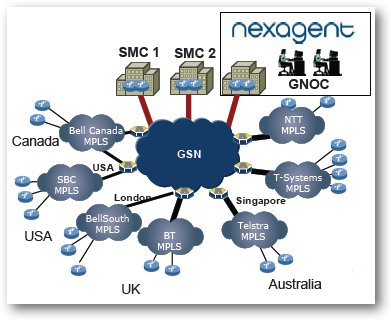
These, and other presentations from the conference can be found from the 2006 MPLScon conference proceedings at Webtorials archive site. You will need to register with Webtorials before you can access these papers.
If you are still unsure about what Nexagent actually does or how they could help your business - go visit them in Reading!
Note: I should declare a personal interest in Nexagent as a co-founder, though I am no longer involved with day to day activities.
